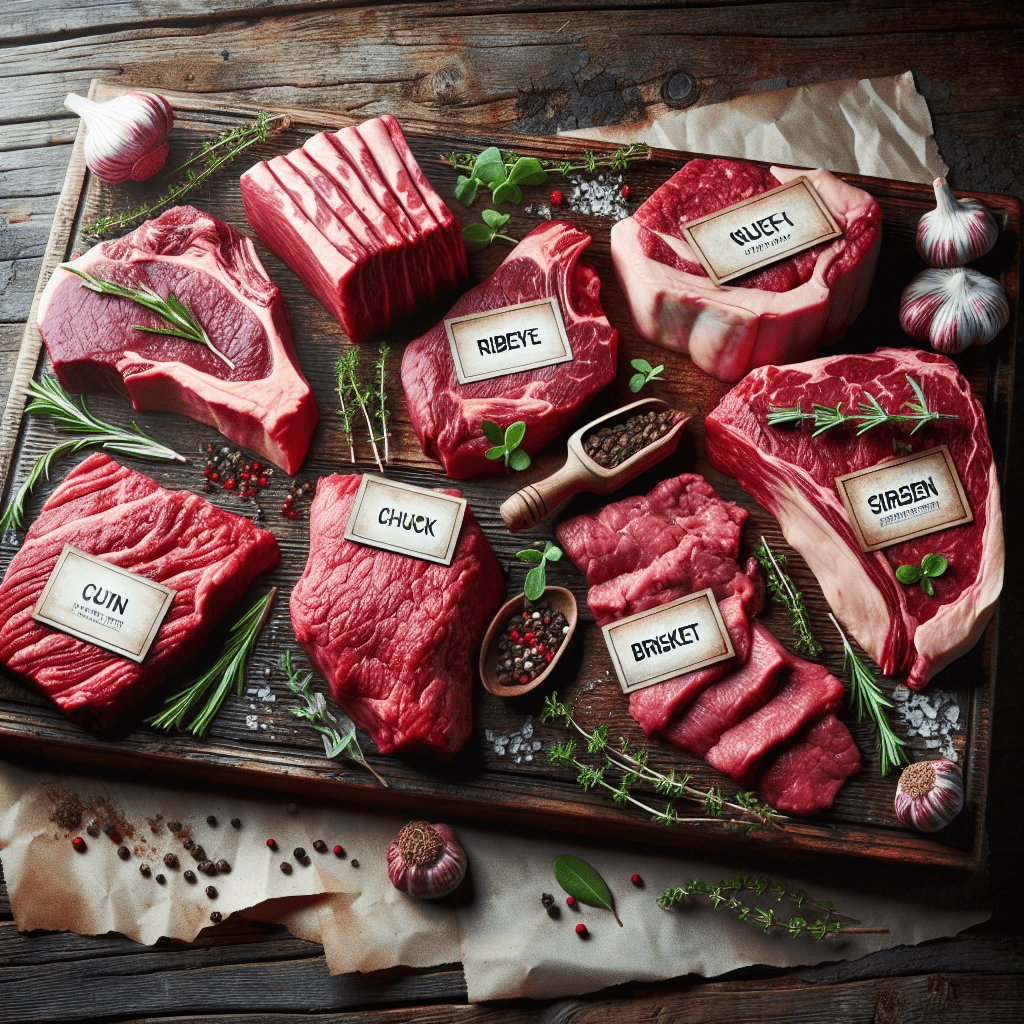The Comprehensive Guide to Understanding Beef: From Farm to Table
Beef is one of the most widely consumed meats around the globe, offering nutritional value, culinary versatility, and an intricate supply chain system from farm to table. Through a neutral lens, this article delves deep into various facets of beef including its production methods, grading, types of cuts, nutritional content, environmental impact, and cultural significance around the world.
Beef Production and Sourcing Practices
The journey of beef begins at cattle farms, where cows are raised for their meat. There are several types of beef production practices, principal among them being conventional, organic, grass-fed, and grain-finished beef farming.
Conventional Beef Farming
In conventional systems, cows often start their lives grazing in pastures and later move to feedlots where they are finished on a diet rich in grains like corn and soy. Feedlot finishing aims to promote faster growth and marbling, which is the intramuscular fat that contributes to the flavor and juiciness of the beef.
Organic and Grass-Fed Beef Practices
Organic beef production requires adherence to strict governmental standards that prohibit the use of antibiotics, synthetic hormones, and genetically modified feed. Grass-fed cows are often exclusively pastured on grass diets though variations exist—some receive supplemental grain feed. Proponents of grass-fed and organic practices often cite benefits such as higher omega-3 fatty acids and sustainability perks.
Beef Grading and Inspection
Beef undergoes grading to assess quality based on factors like marbling and maturity. In the United States, the USDA oversees grading which assigns designations like Prime, Choice, and Select. Inspection, on the other hand, ensures food safety compliance with regulations to minimize health risks.
Varieties of Beef Cuts and Their Uses
Depending on the part of the cow from which it originates, beef can vary significantly in texture, flavor, and ideal cooking methods. High-end steaks such as ribeye and tenderloin present more fat and tenderness whereas tougher cuts like brisket and chuck benefit from low-and-slow cooking methods.
Steaks and Roasting Cuts
These premium cuts often come from the ribs, loin, and sirloin regions of the animal. They are typically grilled or roasted to highlight their tenderness and robust flavors with popular choices including T-bone steaks, sirloin tip roasts, and the luxurious filet mignon.
Slow-Cooking Cuts
Cuts from the cow’s shoulder (chuck), rump (round), breast (brisket), or flank excel during slow cooking processes like braising. These methods tenderize the muscle’s connective tissue creating succulent dishes such as pot roasts, beef stews, and brisket barbecue.
Ground Beef: Versatility in Dishes
Ground beef is adored for its myriad uses. Available in varying degrees of lean-to-fat ratios for different applications, it’s foundational in recipes ranging from meatballs to burger patties to hearty Bolognese sauces.
Nutritional Profile of Beef
Protein Content and Amino Acids
Beef is dense in protein which is vital for muscle maintenance & growth. It contains essential amino acids that our bodies can’t produce independently.
Vitamins and Minerals
Beef houses various vitamins like B12 (crucial for nerve function) & minerals such as iron (integral for oxygen transport within blood). However different cuts & diets may alter these nutrient profiles marginally.
Dietary Considerations
While beef is nutrient-rich it also contains saturated fats & cholesterol; thus moderation & balance within a varied diet are recommended by health experts.
Environmental Implications of Beef Production
The environmental cost of beef production includes greenhouse gas emissions from enteric fermentation in cows & land use for grazing or crop production for feeds. Water usage is also substantial. The industry faces continuous calls for sustainable practices including improved waste management & resource use to reduce ecological footprints.
Cultural Significance Worldwide
Beef dishes represent pivotal parts of many cultures’ cuisines—from Korean Bulgogi to Argentine Asado & American barbeque—emphasizing its global gastronomic importance.
Notes
*Image Description*
A picturesque image displaying an assortment of raw beef cuts artistically arranged on a rustic wooden cutting board with labels identifying each cut such as ribeye, chuck, sirloin, brisket; along with whole fresh herbs like rosemary and thyme scattered around them as accents — suggestive of a gourmet food preparation setting.
